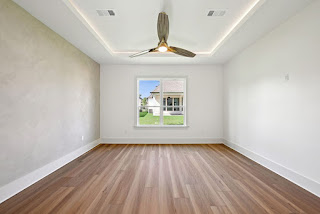Buying a home is one of the biggest financial decisions you'll ever make and it comes with a learning curve. One important but often overlooked part of the process is homeowners insurance. Whether you're taking out a mortgage or paying in cash, protecting your property with the right insurance coverage is essential.
But how much coverage do you need? When should you buy it? What does it actually cover and not cover?
Here's a practical guide to help you shop smart for homeowners insurance, avoid common pitfalls, and walk into your closing with confidence.
Start Shopping Early—Don't Wait Until Closing Week You don't need to wait until you have the keys to secure insurance. In fact, if you're using a mortgage, your lender will require proof of coverage (usually a policy binder) several days before your closing.
Ideally, start shopping about 30 days in advance. This gives you time to compare quotes, understand your options, and give your insurance company time to underwrite your home. Josh Lipstone, vice president at Lipstone Insurance Group, advises homebuyers to be proactive. Waiting too long could delay your closing, and last-minute scrambling may lead to settling for a subpar policy—or paying more than you should.
You Don't Have to Match Market Value One of the most common misconceptions among buyers is thinking their insurance coverage needs to match the price they paid for the home. It doesn't.
Insurers focus on the rebuild cost—what it would take to reconstruct your home today using similar materials and labor. That number is usually lower than the market value, because it doesn't include the land or fluctuating real estate prices.
That said, some unique homes with rare woodwork or vintage craftsmanship may require more coverage than their sales price. Let your insurer guide you here, especially if the home has special features.
Opt for a replacement cost policy, which ensures that your insurance will cover the full cost to rebuild—even if prices have risen. Also look for a policy with an inflation guard, which adjusts coverage limits as construction costs increase over time.
Know What's Not Covered While homeowners insurance provides broad protection, there are key gaps that catch many first-timers off guard.
For example, if a pipe bursts in your home, the resulting water damage is likely covered. But if water enters from the outside—say, from a backed-up sprinkler or heavy rain—your standard policy won't help. Similarly, mold, pest infestations, and leaks caused by poor maintenance are typically excluded.
You may be able to add specific protections for a relatively low cost:
Sewer backup coverage: About $40 to $100 per year.
Flood insurance: Around $700 annually on average, but lower in low-risk zones.
Be sure to discuss add-ons or separate policies with your insurance agent if your home is in a flood-prone area or has older systems.
File Claims Sparingly—And Strategically New homeowners might be tempted to file a claim for every mishap. But insurance companies keep track, and too many small claims in a short span can raise your premiums—or worse, lead to non-renewal.
Instead, treat insurance like a financial safety net for major problems, not minor inconveniences. Choose a deductible you can afford—ideally $2,500 or more—and reserve your claims for events that truly exceed that cost.
As Bill Gatewood from Burns & Wilcox explains, "Homeowners insurance is to cover large catastrophic losses. People shouldn't think of it as a maintenance policy."
Compare Quotes and Insurers Before you commit to a policy, shop around. Get at least three quotes from reputable companies and compare what's included—not just the premiums. Check out customer satisfaction ratings, especially for how insurers handle claims. Consumer Reports and J.D. Power provide helpful rankings each year.
Also, make sure your agent or insurer understands any unusual aspects of your home—whether it's historic details, custom features, or a high-value location. The more accurately they assess your home, the better protected you'll be.
Buying homeowners insurance may not be the most glamorous part of homeownership, but it's one of the most important. By planning ahead, understanding what your policy does and doesn't cover, and choosing a deductible that fits your financial strategy, you can avoid surprises and ensure that your new home is protected from day one.
Remember: it's not just about closing the deal. It's about protecting the place you now call home.
Click Here For the Source of the Information.



